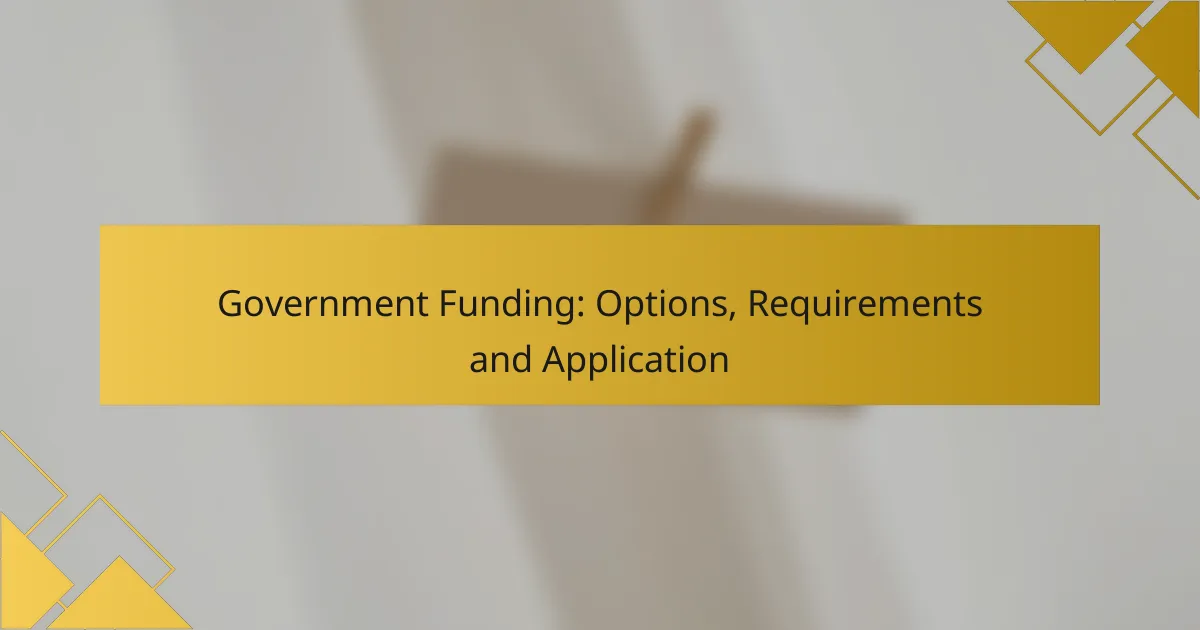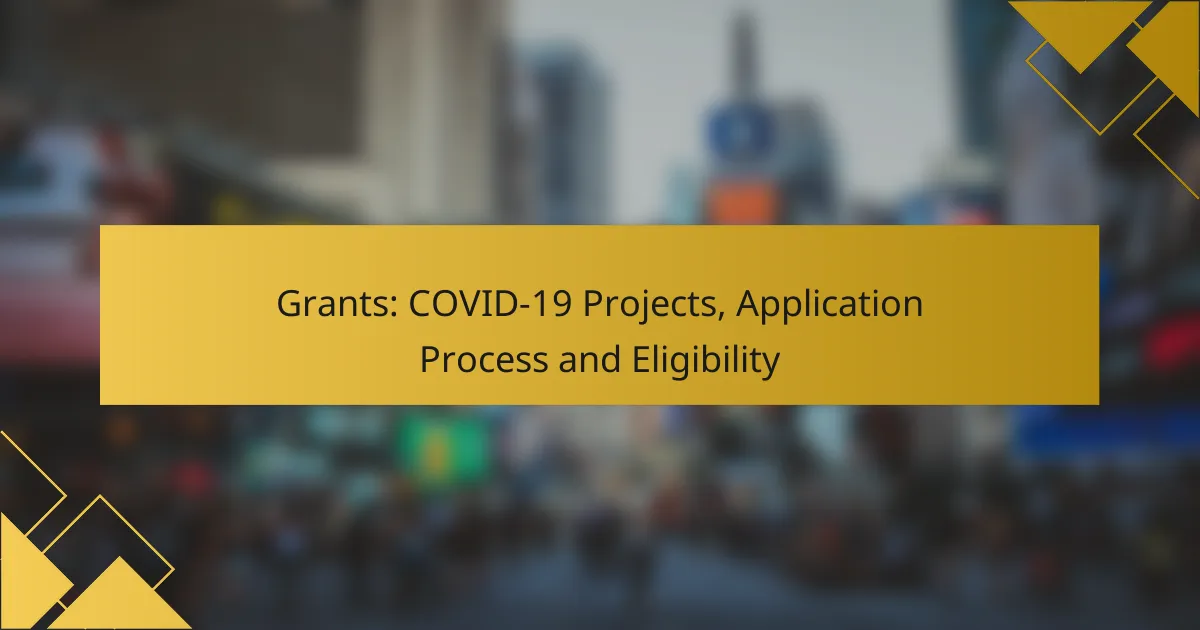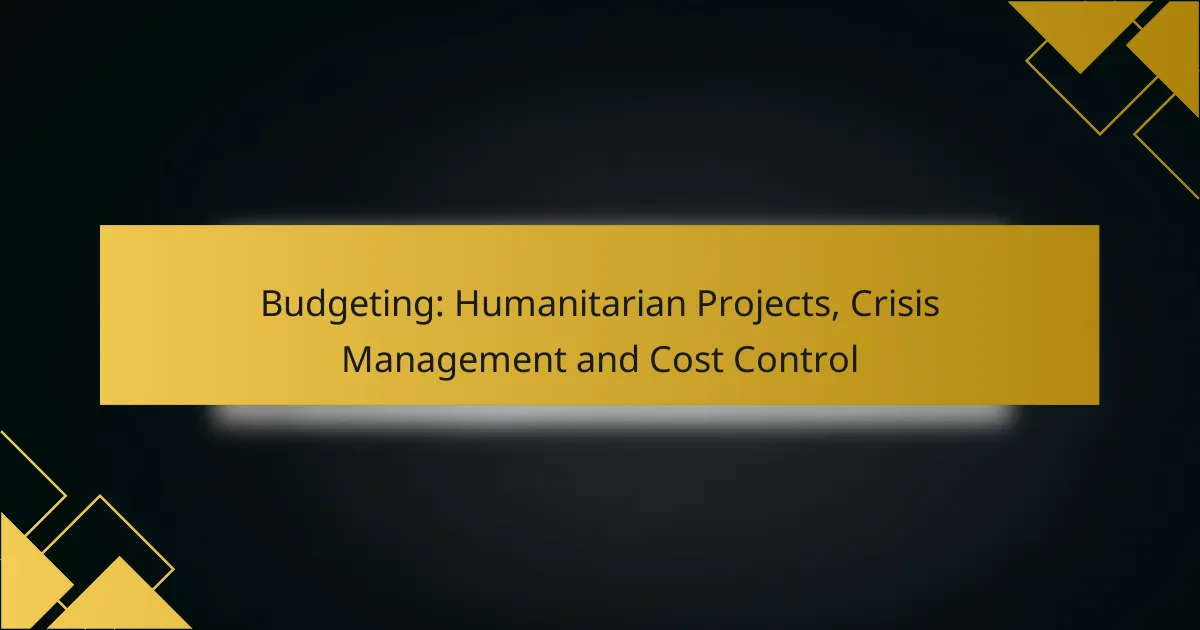In the United States, individuals and organizations can access a variety of government funding options, including federal grants and state programs, each with unique requirements and application processes. Eligibility criteria often depend on factors such as income, project specifics, and geographic location. Successfully applying for these funds involves identifying the appropriate program, preparing necessary documentation, and navigating the submission process effectively.
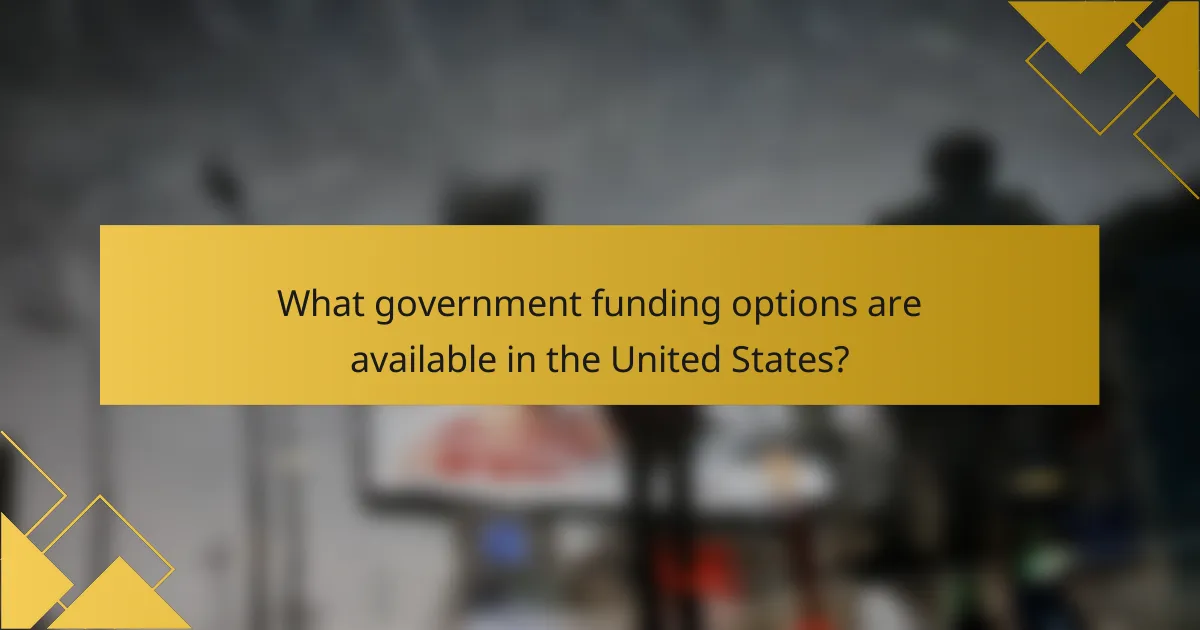
What government funding options are available in the United States?
In the United States, various government funding options exist for individuals and organizations seeking financial assistance. These options include federal grants, state funding programs, local government initiatives, private grants, and nonprofit funding sources, each with distinct requirements and application processes.
Federal grants
Federal grants are financial awards provided by the U.S. government to support specific projects or initiatives. These grants do not require repayment, making them an attractive option for funding education, research, and community development.
To apply for federal grants, individuals and organizations must typically submit a detailed proposal through the Grants.gov portal. Key considerations include understanding eligibility criteria, aligning projects with federal priorities, and adhering to deadlines.
State funding programs
State funding programs offer financial assistance tailored to the needs of local communities and industries. Each state has its own set of programs, often focusing on areas like education, health care, and economic development.
Applicants should research their specific state’s offerings and requirements, as these can vary significantly. Many states provide online resources and contact information for state agencies that can assist with the application process.
Local government initiatives
Local government initiatives provide funding opportunities at the city or county level, often aimed at addressing community-specific issues. These initiatives may include grants for public projects, small business support, or community development programs.
Engaging with local government offices can provide insights into available funding and application procedures. Networking with local officials and attending community meetings can also help identify potential funding sources.
Private grants
Private grants are funds provided by foundations, corporations, or individuals to support specific projects or causes. Unlike government grants, private grants may have more flexible criteria and can be targeted towards niche areas.
Researching potential private grantors is crucial, as each may have unique application processes and funding priorities. Building relationships with funders and clearly articulating project goals can enhance the chances of receiving funding.
Nonprofit funding sources
Nonprofit organizations often rely on a variety of funding sources, including grants, donations, and sponsorships. Many nonprofits seek funding from foundations or government programs that align with their mission and objectives.
To secure funding, nonprofits should develop a strong case for support, highlighting their impact and community benefits. Establishing a solid track record and maintaining transparency with funders can also foster long-term relationships and ongoing support.
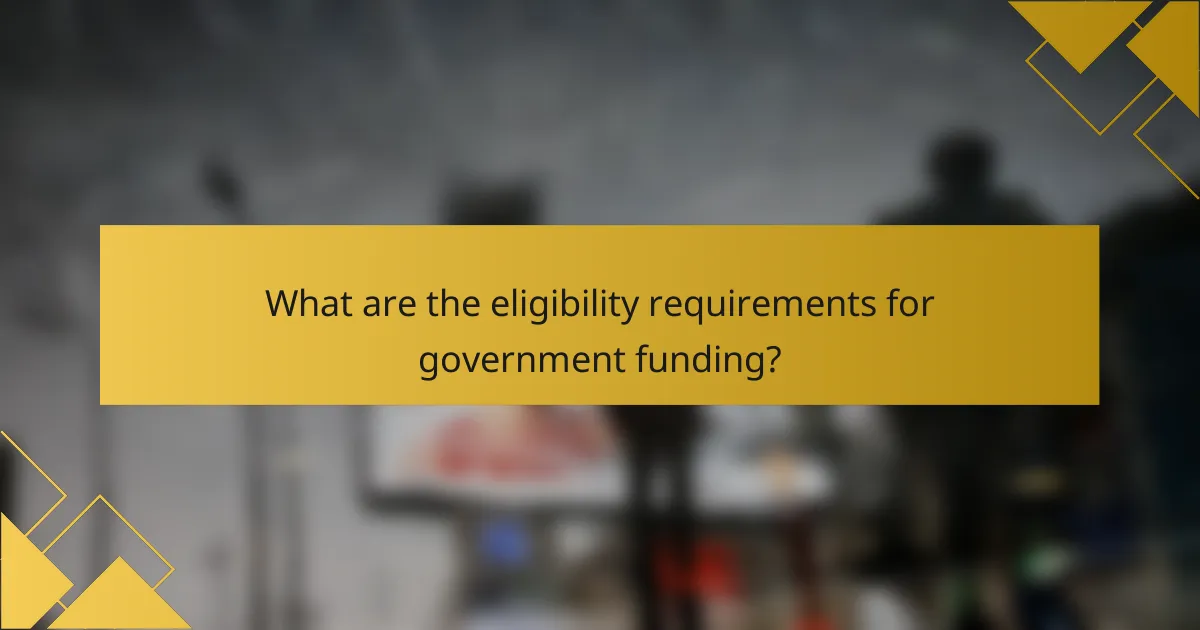
What are the eligibility requirements for government funding?
Eligibility for government funding typically involves meeting specific criteria set by funding agencies. These requirements can vary based on income, project details, geographic location, and the type of business applying for the funds.
Income thresholds
Income thresholds are often a key factor in determining eligibility for government funding. Many programs set limits based on the applicant’s total income or the income of the business, which may need to fall within certain ranges to qualify. For example, low-income applicants may be prioritized for specific grants or loans.
It’s essential to verify the specific income limits for each funding program, as they can differ significantly. Some programs may require documentation of income to assess eligibility accurately.
Project specifications
Project specifications refer to the criteria that the proposed project must meet to qualify for funding. This can include the project’s goals, expected outcomes, and alignment with government priorities, such as sustainability or innovation. Applicants should clearly outline how their project meets these specifications in their proposals.
Additionally, some funding programs may require projects to address specific community needs or contribute to economic development. Understanding these requirements is crucial for crafting a compelling application.
Geographic restrictions
Geographic restrictions can limit eligibility based on the location of the applicant or the project. Many government funding programs are designed to support specific regions or communities, such as rural areas or economically disadvantaged neighborhoods. Applicants should check if their location aligns with the funding program’s target areas.
In some cases, funding may be available only to businesses operating in certain states or municipalities. Being aware of these restrictions can save time and effort in the application process.
Business type qualifications
Business type qualifications determine which types of entities can apply for government funding. Common categories include small businesses, non-profits, and educational institutions. Each category may have different eligibility criteria and funding amounts available.
For example, small businesses may need to meet specific size standards, such as employee count or annual revenue, to qualify. Understanding these qualifications helps applicants ensure they fit the criteria before applying for funding.

How do you apply for government funding?
Applying for government funding involves several steps, including identifying the right program, preparing necessary documentation, and submitting your application through designated platforms. Understanding the requirements and processes can significantly enhance your chances of securing funding.
Application process overview
The application process for government funding typically begins with researching available programs that align with your project or business needs. Each program may have specific eligibility criteria and deadlines, so it’s crucial to review these details carefully.
Once you identify a suitable funding opportunity, you will need to complete an application form, which often includes a project proposal outlining your objectives, budget, and expected outcomes. After submission, applications are usually reviewed by a committee, and you may be required to provide additional information or attend an interview.
Required documentation
Documentation requirements can vary significantly depending on the funding program. Commonly required documents include a detailed project proposal, a budget breakdown, proof of eligibility, and financial statements. Some programs may also ask for letters of support or partnership agreements.
It’s advisable to prepare these documents in advance and ensure they meet the specific guidelines set by the funding agency. Incomplete or poorly prepared documentation can lead to delays or rejection of your application.
Common application platforms
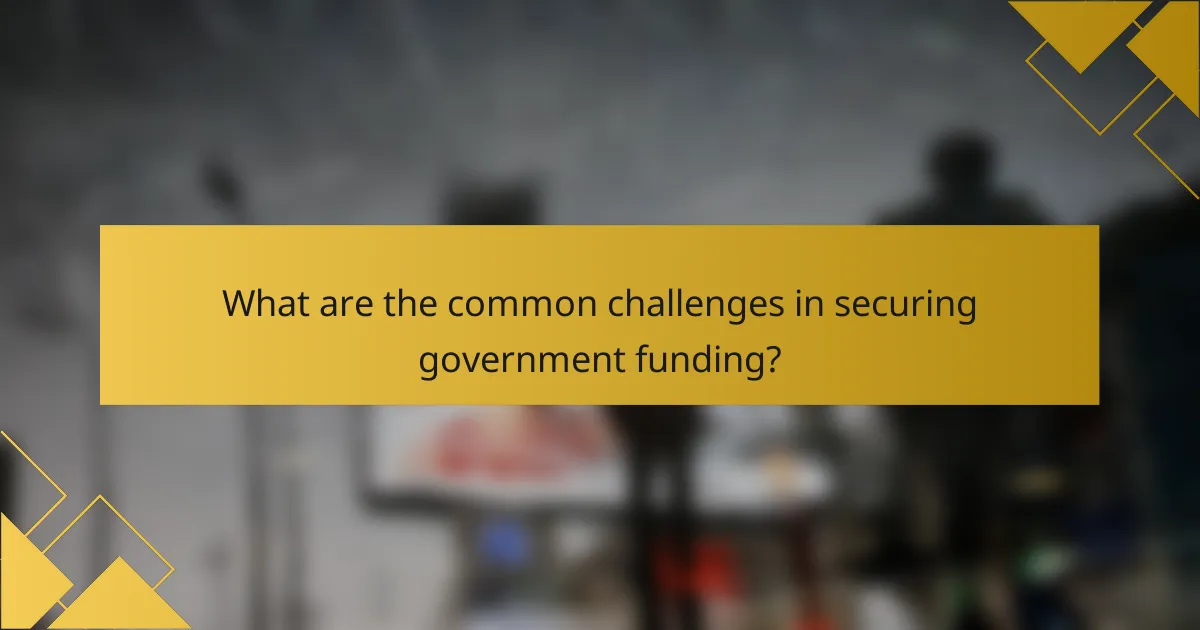
What are the common challenges in securing government funding?
Securing government funding often presents several challenges, including complex application procedures, high competition among applicants, and limited funding availability. Understanding these obstacles can help organizations navigate the funding landscape more effectively.
Complex application procedures
Government funding applications typically involve intricate procedures that can be daunting. Applicants must carefully follow guidelines, submit extensive documentation, and meet specific eligibility criteria. This complexity can lead to delays and increased chances of errors in submissions.
To manage this, it is advisable to create a checklist of required documents and deadlines. Engaging with resources such as grant writing workshops or consulting with experienced grant writers can also simplify the process.
High competition
High competition is a significant hurdle in securing government funding, as many organizations vie for the same limited resources. This competition can make it difficult for individual applicants to stand out, especially if they lack a unique project proposal or established track record.
To improve chances of success, applicants should focus on crafting a compelling narrative that clearly outlines their project’s impact and aligns with the funding agency’s priorities. Networking with previous recipients and attending informational sessions can also provide valuable insights into successful applications.
Limited funding availability
Limited funding availability can restrict the number of projects that receive support, making it crucial for applicants to identify the right opportunities. Many government programs have specific budgets, which can lead to funding being exhausted quickly.
Applicants should regularly monitor funding announcements and be prepared to apply as soon as opportunities arise. Diversifying funding sources by exploring local, state, and federal programs can also help mitigate the impact of limited availability.
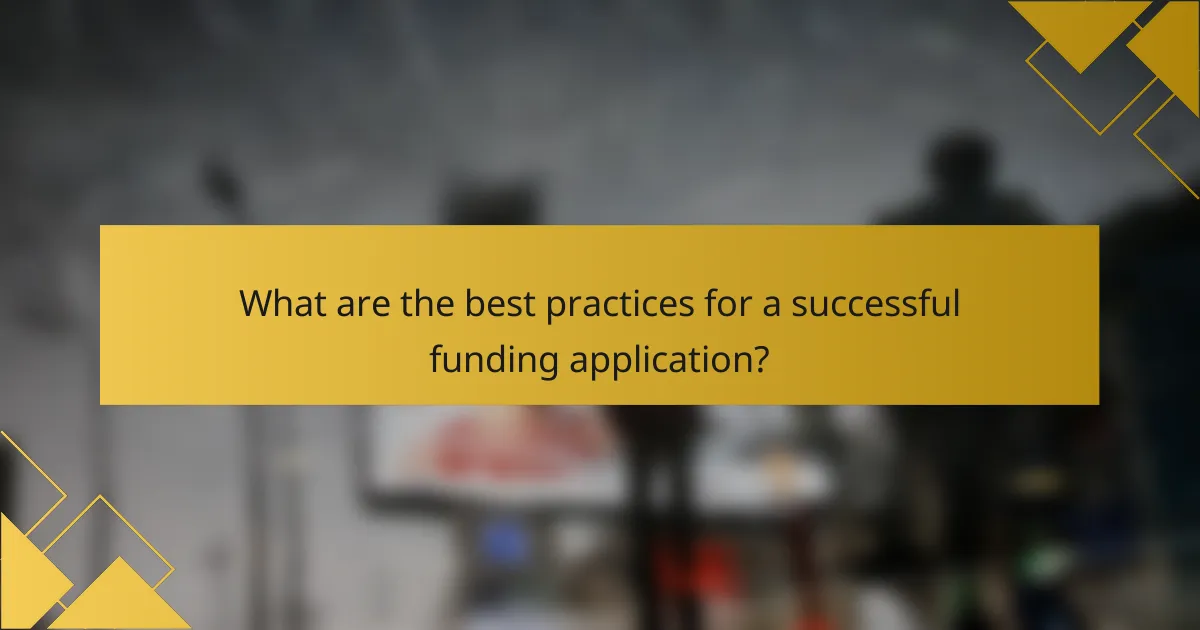
What are the best practices for a successful funding application?
Successful funding applications are characterized by clarity, thoroughness, and alignment with funding goals. By focusing on clear project objectives and providing detailed budget plans, applicants can significantly enhance their chances of securing financial support.
Clear project goals
Establishing clear project goals is essential for a successful funding application. These goals should be specific, measurable, achievable, relevant, and time-bound (SMART). For example, instead of stating a goal to “improve community health,” specify “increase access to healthcare services for 500 low-income families within 12 months.”
When defining project goals, consider the interests of the funding body. Align your objectives with their mission and priorities to demonstrate how your project contributes to their goals. This alignment can make your application more compelling.
Detailed budget plans
A detailed budget plan is critical in showcasing the financial feasibility of your project. Break down costs into categories such as personnel, materials, and overhead. For instance, if your project requires $50,000, outline how much will go to salaries, equipment, and other expenses.
Ensure your budget is realistic and justifiable. Funders often look for transparency and accuracy, so provide explanations for each line item. Avoid common pitfalls like underestimating costs or failing to include indirect expenses, which can lead to funding denials.






